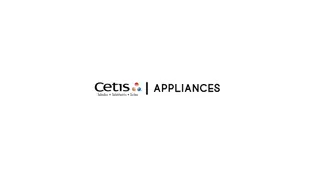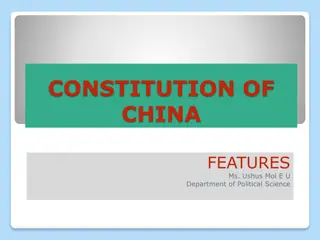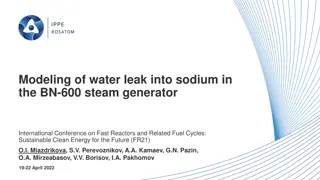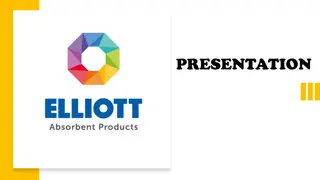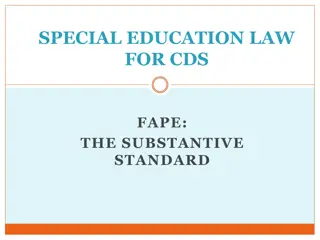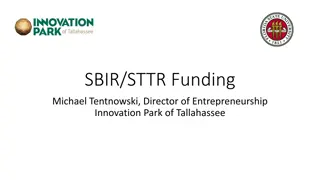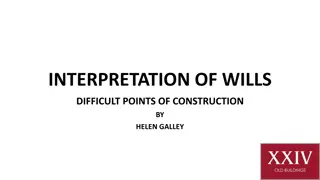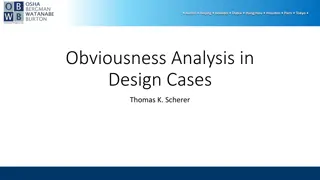
Economic Theory of Multiproduct Firm by David Teece (1982)
David Teece's 1982 paper explores the economic theory of multiproduct firms and highlights the need to modify neoclassical firm theories to accommodate the distinct features of modern multiproduct enterprises. Teece emphasizes the role of organizational knowledge and transaction cost properties in market exchange, aiming to separate theories of diversification and growth within firms. He argues that understanding why firms diversify into related and unrelated product lines is crucial for explaining their strategic choices.
Download Presentation

Please find below an Image/Link to download the presentation.
The content on the website is provided AS IS for your information and personal use only. It may not be sold, licensed, or shared on other websites without obtaining consent from the author. If you encounter any issues during the download, it is possible that the publisher has removed the file from their server.
You are allowed to download the files provided on this website for personal or commercial use, subject to the condition that they are used lawfully. All files are the property of their respective owners.
The content on the website is provided AS IS for your information and personal use only. It may not be sold, licensed, or shared on other websites without obtaining consent from the author.
E N D
Presentation Transcript
Towards an Economic Theory of the Multiproduct Firm Teece, David J. (1982). Journal of Economic Behavior and Organization Prepared by Der-Ting Huang
Research Gap The theory of the firm has yet to accommodate one of the principal features of the modern business enterprise-- its multiproduct character. Main Purpose Main Purpose To modify the neoclassical theory of the firm to emphasize the distinctive properties of organizational knowledge and the transactions cost properties of market exchange To make an analytical separation between a theory of diversification and a theory of growth since growth and diversification are not inextricably linked Theory of Multiproduct Organization To explain why firms diversify into related and unrelated product lines rather than reinvesting in traditional lines of business or transferring assets directly to stockholders
Traditional Perspectives Neoclassical Firm Assumes profit-maximizing entities operating in competitive products and capital markets exhibiting zero transactions costs and competitive equilibrium. Managerial Explanation a. Diversification into new products is the main engine of firm growth. b. Managers are motivated to increase firm size (positive relationship between managers compensation and firm size). a. There are costs attached to diversification, which reduces the firms rate of return on capital. b. Managers compensation is correlated with profit rate not sales. Previous Literature Limitations pointed out by Teece Under zero transaction cost assumptions, it impossible to develop a theory of the multiproduct firm. Whether firms are organized along specialized or multiproduct lines is economically irrelevant since market arrangements and internal organization are perfect substitutes. Teece s Argument Divesting multiproduct or diversifying specialized firms is a transformation lacking economic significance in the context of neoclassical economy. Diversification can be efficiency driven in addition to the managerial motives that explain observed diversification activity.
Nature of the Firm Individual and Organizational Knowledge Individual knowledge can be tacit and not easily codified Routines function as the basis of organizational memory Fungible Knowledge Organization knowledge is often fungible (not always entirely specialized to products and services) Firms can have a variety of products that it can produce with its organizational technology Implications: Contradiction to the Neoclassical Firm Firms can select an end-product configuration consistent with its fungible organizational technology, i.e., firms have choices of both end-product and technology
Dynamic Considerations Learning, Teaching, and Penrose-Effects Growth exists because there are unused productive services. Unused services exist not only because of indivisibilities, but also because of learning and routines. Generation of excess both managerial and technical resources and their fungible character is critical to the theory of diversification Demand Conditions Competitive returns can no longer be obtained through reinvestment in traditional lines
Dynamic Considerations Market Failure Considerations (assume excess resources are indivisible or fungible) Class 1: Indivisible but non-specialized physical capital as a common input into two or more products. Market solution preferred Class 2: Indivisible specialized physical capital as a common input to two or more products quasi-rent & hold-up problems Multiproduct diversification preferred Class 3: Human capital as a common input to two or more products transfer of tacit knowledge & information impactedness problems Multiproduct diversification preferred Class 4: External economies (economies of scope) Downsides of diversification: congestion problems associated with accessing common inputs & control loss problems Multiproduct diversification preferred when transaction costs are high
Dynamic Considerations Market Failure Considerations and Financial Capital The capital market does not fully reflect all information Managers (well-informed) make investment decisions on behalf of stockholders (poorly- informed) to increase stockholder wealth internal capital market and partial internalization of capital allocation process
Related Issues Slack and Managerial Discretion Organizational slack: cushion of actual resource allowing organizations to adapt to both internal and external pressures Excess resources: excess factor services over and above what is needed to meet managers requirements for organizational slack De Novo Entry vs. Acquisition or Merger Potential importance of complementary assets and slack as influencing the entry mode decision Mergers and acquisitions may serve to minimize slack in both the acquiring and acquired firms, thereby generating a positive contribution to economic efficiency Lateral vs. Conglomerate Diversification The efficiency-based theory aligns more with lateral diversification but still sheds light on the connection between the internal capital market efficiencies of firms and conglomerate diversification. Some Historical Observations Depression trigged diversification by generating excess capacity. WWII created significant demand for new products.
Conclusion Integrate arguments from Penrose (1959) and TCE to investigate the conditions when the firms will diversify. Important building blocks of the theory of the multiproduct firm include excess capacity and its creation, market imperfections, and the peculiarities of organizational knowledge (i.e., fungibility and tacit character).


![❤[READ]❤ Robotic Exploration of the Solar System: Part I: The Golden Age 1957-19](/thumb/21623/read-robotic-exploration-of-the-solar-system-part-i-the-golden-age-1957-19.jpg)


